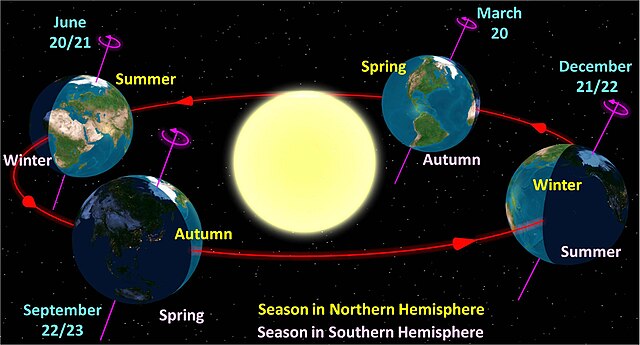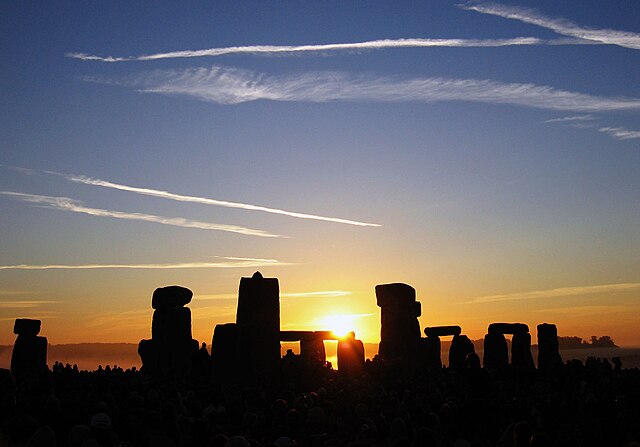The winter solstice, also called the hibernal solstice, occurs when either of Earth's poles reaches its maximum tilt away from the Sun. This happens twice yearly, once in each hemisphere. For that hemisphere, the winter solstice is the day with the shortest period of daylight and longest night of the year, and when the Sun is at its lowest daily maximum elevation in the sky. Each polar region experiences continuous darkness or twilight around its winter solstice. The opposite event is the summer solstice.
Sunset at Stonehenge in England during the winter solstice in the Northern Hemisphere
The seasons with the transition points of the June solstice, September equinox, December solstice, and March equinox
Sunlight entering the passage of Newgrange in Ireland on the winter solstice
Neolithic site of Goseck circle in Germany. The yellow lines indicate the directions in which sunrise and sunset are seen on the day of the winter solstice.
A solstice is the time when the Sun reaches its most northerly or southerly excursion relative to the celestial equator on the celestial sphere. Two solstices occur annually, around June 20–22 and December 20–22. In many countries, the seasons of the year are determined by the solstices and the equinoxes.
The globe on an equirectangular projection to show the amount of reflected sunlight at southern and northern summer solstices, respectively (watts / m2).
2005 Summer solstice sunrise over Stonehenge
A solargraph taken from the Atacama Pathfinder Experiment at the Llano de Chajnantor Observatory in the southern hemisphere. This is a long-exposure photograph, with the image exposed for six months in a direction facing east of north, from mid-December 2009 until the southern winter solstice in June 2010. The Sun's path each day can be seen from right to left in this image across the sky; the path of the following day runs slightly lower until the day of the winter solstice, whose path is the lowest one in the image.







